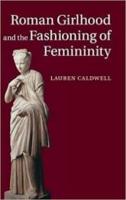
CUP (2018) p/b 188pp £17.99 (ISBN 9781108730259)
This is the only book-length study focusing on Roman girls and, in particular, how they were prepared for the transition from childhood to marriage. C.’s intention is to consider different perspectives on the second decade of a girl’s life, inevitably focusing on those from the more elite group. Her scholarship is impressive: she has amassed a huge range of sources, legal, medical, literary and inscriptions, covering five centuries until the end of the Empire and the provinces as well as the city of Rome itself. All Latin quotations and terminology are translated to aid the non-specialist reader. Extensive footnotes are presented at the bottom of each page, along with a detailed biography and index at the end of the book.
The first chapter deals with a girl’s education. C. reviews the sources which indicate, for example, that ‘too much scholarly accomplishment, or the wrong kind … could derail the transition to marriage’. She suggests that the poetry of Ovid and Sulpicia reflects social concerns that an educated virgo may take charge of her sexual choices ‘with disastrous and chaotic results.’ Girls from higher class families would be literate, but the rhetorical training provided for boys was not thought suitable for them. In the second chapter, C. considers the protection of virginity and the effects of the Augustan law on the traditional right of a paterfamilias over a virgo in their family. She concludes that some daughters continued to be punished with death by their fathers for offences connected with chastity late into the Imperial era. Interestingly, once a virgo had become engaged, it was she who would be punished for any sexual offence perpetrated against her, rather than her male assailant.
C. then discusses the issues of health and exercise and what was deemed appropriate for unmarried girls. The medical writers reflected the tension between awareness that childbirth at a very young age was not good for a girl’s health and the persistent desire of elite families to marry off their daughters very young. Expert opinions varied considerably: some believed that young girls had unhealthy excess blood stored in their bodies which was released by the menarche, and that sexual activity cured the problems of puberty (puberty being regarded as an illness itself). A healthy diet and moderate exercise would prevent bloating which led to ‘precocious and problematic sexual urges’. One authority suggested that 13 or 14 was the perfect age for marriage and loss of virginity; another asserted that the most suitable time for child-bearing was around the age of 18, and that childbirth in early adolescence was unhealthy. Indeed, evidence from tombstones indicates that early marriage and early childbirth might well lead to early death.
Chapter 4 addresses the pressure on girls to marry. Early marriage might lead to a less satisfactory relationship with a husband and risks to health, but virginity would be assured. Girls had an important role in protecting their family status through marriage. The minimum legal age for marriage was 12 years old, but younger girls might well be moved into their prospective husband’s house before this. Typically, marriages were arranged between the girl’s father and the groom, and the girl herself had little influence. Augustan law cited 20 years as the appropriate age for bearing a first child, but this was not enforced. C. suggests that early marriage could be considered as sexual exploitation or child labour, as in the modern world. In the final chapter she examines the marriage ceremony, not in terms of the rituals, but rather the experience of the bride as she moved from virgin to sexually active wife. She draws on a number of authors including the poet Catullus (61 & 62), Petronius, Plutarch and Apuleius to describe reluctant brides, fearful of their first encounter with their husband. Her final epilogue briefly summarises the previous chapters.
This book will be of interest to those engaged more widely in women’s studies as well as to those wishing to explore aspects of ancient Roman society in more depth. It is accessible and informative.
Marion Gibbs
